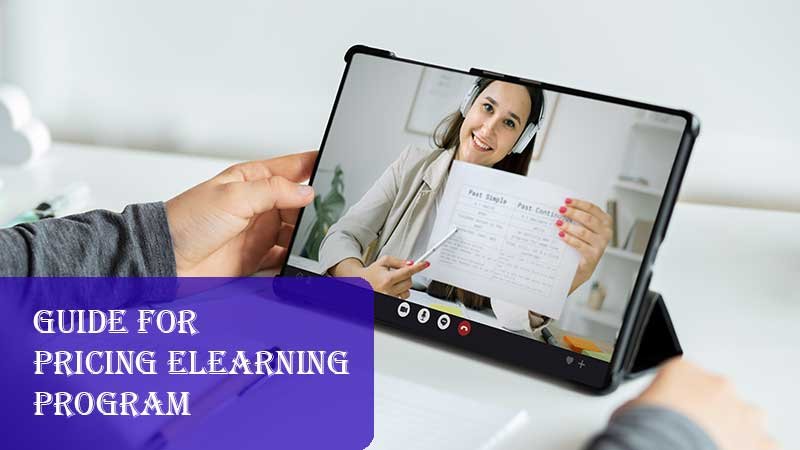Experts have believed that pricing an eLearning program is the last and most vital step in creating the eLearning website, app, or software. The pricing process of your eLearning program should include determining where to start, what expenses and what maintenance to incorporate, and where to stop.
You can also check out pricing models by other brands such as the Skilljar pricing model and analyze how they have reflected the fundamental values of their learning business in the pricing of their eLearning course.
Putting a price on your eLearning courses might be daunting. If you charge too much, you risk alienating a large portion of your target market and in case you charge too low, you may be undervaluing your hard work. Finding a perfect balance is crucial in determining the price, but how do you make money while keeping it inexpensive for your online students?
How to Price eLearning Program Effectively
This article aims to go over tips on how to price your eLearning courses correctly.
1. Analyze the Market
If you come across an eLearning course with similar expertise to yours, take a look at how they have priced their modules and how many sales they have made. Analyze the total number of sales, total number of students who have undertaken the course. The length of the eLearning course, the distribution model, and the benefits are important factors to be considered.
Tip: Do not forget to check out the feedback and reviews from current consumers of your market competition.
2. Take Into Account Your Out-of-Pocket Expenses
eLearning courses are not created for free. Even if you have used free authoring and multimedia software, maintenance, and hosting eLearning courses, you have still put in a significant amount of time and effort. Time is a valuable commodity.
Tip: Make an excel sheet with all of the costs you incurred while designing your eLearning courses and include them in your price.
3. Value the Quality of Your Content
Consider interactive exercises, multimedia features, eLearning evaluations, written information, and images when choosing your price point. If you design highly interactive designs that include scenarios and simulations, it seems to reason that they should be more expensive than word-based online courses. The duration of your eLearning courses is also significant.
Tip: Conduct a survey to identify market gaps and find out what learners need right now.
4. Conduct Research to Determine the Demand of Your Niche
You may be able to charge a higher fee if your eLearning course is one-of-a-kind and covers a topic that was never addressed before. This is true only if there is a genuine demand for the eLearning course. For example, if you create an eLearning course on how to maintain household items but no one is interested in learning about it, you might want to go with a lower price point. Finding the point when supply and demand collide is also critical.
5. Run a Test on Selected Audience
Using promo codes and coupons to find the best pricing for your eLearning courses can be a terrific way to save money. Begin with a discount and progressively reduce it while keeping an eye on the number of recent sales. If you notice a drop in signups, you know the pricing is too high. Then you’ll be able to sell your eLearning courses at the most profitable pricing.
Tip: Charge a low price initially to attract an audience, but do not make it free of cost, as the target audience may perceive it as low quality.
Conclusion:
Set revenue targets after determining the ideal pricing threshold, and be willing to make slight changes to the final price of your eLearning courses. Once you’ve found that sweet spot, there is no limit in terms of how much money you can make over time. Even better, you have the opportunity to convert your audience into lifetime learners and consumers, increasing their likelihood of purchasing future eLearning courses.
Those who have developed online courses know there are lots of decisions to make along the way, from choosing the best course production platform for your content to marketing your course and creating an audience, and everything in between. The success of your course is decided by how much you charge for it. You instinctively know that choosing the proper charge is critical, but you don’t want to turn customers away by making a mistake.



